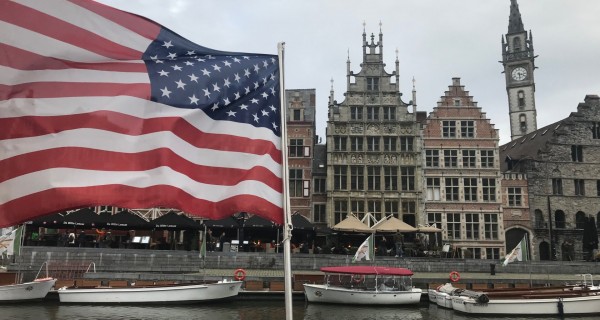The benefits and potentials of the Dutch American Friendship Treaty: the Voluntary MVV Route

On 27 March 1956, the United States of America and the Kingdom of the Netherlands signed a bilateral treaty, namely the Netherlands Friendship, Commerce, and Navigation Treaty (also, known as the Dutch American Friendship Treat). Under this Treaty, an American citizen can acquire a Dutch residence permit for the purpose of entrepreneurship, provided that he/she invests a substantial amount in his/her Dutch business. However, since the 1950s, the definition of ‘a substantial amount’ has not been changed. In today’s terms, the minimum required amount of investment is €4500 (approximately, US$5450).
In three articles, Mynta Law will discuss the existing benefits and unknown potentials of the Dutch American Friendship Treaty. In this article, we first discuss the voluntary MVV visa route towards Dutch residency.
Before the pandemic, most US citizens who have the ambition to set up their businesses in the Netherlands would be able to travel to the Netherlands directly, as American citizens are, in general, exempted from the Schengen short stay visa for the purpose of business and pleasure. On the basis of their US passport alone, US citizens would be able to enter the Netherlands and stay up to 90 days every 180 days without a visa. Upon arrival in the Netherlands, these American entrepreneurs would register their businesses with the Dutch Chamber of Commerce, and subsequently they would apply for a Dutch residence permit (‘verblijfsvergunning’) with the Netherlands Immigration and Naturalization Department (the IND). Nevertheless, due to the outbreak of the coronavirus, many countries around the globe have introduced a number of travel restrictions, limiting so called non-essential trips. The Netherlands government have also followed suit. Since March 2020, it has become increasingly difficult for American citizens to travel to the Netherlands on a US passport alone. For American employees and students, the Dutch Government introduced a few exceptions to the general travel ban. For example, at the Dutch border, a (potential) American employee of a Dutch company will need to show a preliminary residence permit approval (‘kennisgeving’) and a written statement of necessity issued by the Dutch employer (explaining the reasons why the presence of the American employee is needed without delay). If you are an entrepreneur or freelancer, it will be literally impossible to present this proof of preliminary residence permit approval (‘kennisgeving’) and the written statement from a Dutch employer. Luckily, as the old saying goes, all roads lead to Rome.
Under the Dutch immigration laws, there is another way to acquire Dutch residency. It is called TEV-DIP procedure. It means that an American entrepreneur can first apply for a voluntary entry clearance with a Dutch embassy/consulate outside the Netherlands. An American entrepreneur or freelancer will first need to book an appointment with a Dutch Consulate in his/her region. The Dutch consulate will forward the application materials (such as, the deed of incorporation of a Dutch limited liability company) to the IND in the Netherlands. Once the IND approve the application, the consulate will issue a special entry clearance visa. In Dutch, it is called “machtiging tot voorlopig verblijf” (mvv, in abbreviation). With a valid entry clearance visa in the passport, the holder will be allowed to enter the Netherlands. Upon arrival in the Netherlands, the official residence permit card can be picked up directly at one of the IND offices. Most recently, Mynta Law helped a Kentucky client obtain her MVV entry clearance visa.
Should you have any questions about the Dutch American Friendship Treaty, please feel free to contact Mynta Law.

Gerelateerde artikelen
- 匈牙利欧盟永居:移民荷兰新机遇
- How many Dutch residence statuses can you have at the same time?
- Overstay and entry ban: how does it work?
- Dutch American Friendship Treaty: different forms of busness associations in the Netherlands
- Unemployed Highly Skilled Migrants: Eight Options to Extend Your Legal Stay in the Netherlands
- The benefits and potentials of the Dutch American Friendship Treaty: American students in the Netherlands
- You have violated the Foreign Nationals Employment Act (Wav) - what now?
- The scientific researcher's permit: the application in a nutshell
